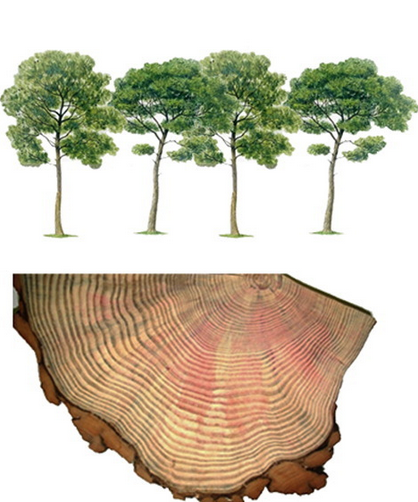Abstract
In Mediterranean areas with limited availability of water, an accurate knowledge of growth response to hydrological variables could contribute to improving management and stability of forest resources. The main goal of this study is to assess the temporal dynamic of soil moisture to better understand the water-growth relationship of Pinus halepensis forests in semiarid areas. The estimates of modelled soil moisture and measured tree growth were used at four sites dominated by afforested Pinus halepensis Mill. in south-eastern Spain with 300 to 609 mm mean annual precipitation. Firstly, dendrochronological samples were extracted and the widths of annual tree rings were measured to compute basal area increments (BAI). Secondly, soil moisture was estimated over 20 hydrological years (1992–2012) by means of the HYDROBAL ecohydrological model. Finally, the tree growth was linked, to mean monthly and seasonal temperature, precipitation and soil moisture. Results depict the effect of soil moisture on growth (BAI) and explain 69–73% of the variance in semiarid forests, but only 51% in the subhumid forests. This highlights the fact that that soil moisture is a suitable and promising variable to explain growth variations of afforested Pinus halepensis in semiarid conditions and useful for guiding adaptation plans to respond pro-actively to water-related global challenges.



